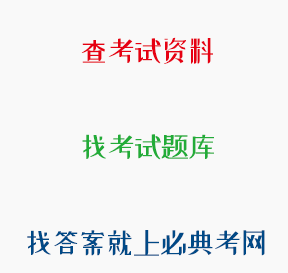正确答案: C
图穷匕见
题目:下列成语中,源于荆轲刺秦王故事的是( )。
解析:"荆轲刺秦王"的故事中,荆轲捧着装有樊於期头颅的匣子,秦舞阳捧着装有地图的匣子去觐见秦王,秦王慢慢展开卷着的地图,细细观看。快展到尽头时,突然露出一把匕首。荆轲见匕首露现。因此,图穷匕见的出自于荆轲刺秦王的故事。故选择C。A选项,四面楚歌讲的是楚霸王项羽,与项羽有关的成语典故还有:破釜沉舟、霸王别姬、力能扛鼎、自刎乌江、无颜见江东父老。B选项,投笔从戎是东汉名将班超。D选项,完璧归赵讲的是蔺相如。与蔺相如有关的成语典故还有:负荆请罪、将相和。
查看原题 查看所有试题
学习资料的答案和解析:
[单选题]《国家中长期教育改革和发展规划纲要(2010-2020年)》提出把促进公平作为国家基本教育政策。教育公平的关键是( )。
机会公平
解析:《国家中长期教育改革和发展规划纲要(2010-2020年)》第二条工作方针指出:教育公平的基本要求是保障公民依法享有受教育的权利,关键是机会公平,重点是促进义务教育均衡发展和扶持困难群体,根本措施是合理配置教育资源,向农村地区、边远贫困地区和民族地区倾斜,加快缩小教育差距。故选择A。
[单选题]被鲁迅称为"改造文章的祖师"的是( )。
曹操
解析:建安诗歌的主要代表是曹氏父子,即曹操及其子曹丕、曹植。其中曹操代表作有《龟虽寿》《蒿里行》被鲁迅称为"改造文章的祖师"。故选择A。曹操有关的作品名句:《龟虽寿》("老骥伏枥,志在千里。烈士暮年,壮心不已")、《蒿里行》("白骨露于野")、《短歌行》("对酒当歌,人生几何")、《观沧海》、("日月之行,若出其中;星汉灿烂,若出其里")《求贤令》("唯才是举,吾得而用之")等。B选项,曹植代表作:曹植被誉为"建安之杰",所作辞赋以《洛神赋》("凌波微步""婉若游龙")最为著名。曹植的其它作品:《白马篇》、《七哀诗》等。C选项,陶渊明是我国第一位以田园作为主要描写内容的诗人,他的诗被后人称为田园诗。他曾不愿"为五斗米折腰"而弃官归隐。代表作:《归园田居》("久在樊笼里,复得返自然")、《饮酒》、《桃花源记》、《闲情赋》《归去来兮辞》("富贵非吾愿,帝乡不可期")。D选项,王羲之,东晋著名书法家,其《兰亭序》被誉为"天下第一行书"。
[单选题]在幻灯片放映时要临时涂写,应该( )。
右击,选"指针选项",选"笔型"及"颜色";
解析:在幻灯片放映时要临时涂写,右击,选"指针选项",选"笔型"及"颜色"。故选择C。右击,选"指针选项"/"屏幕",可以切换"白屏"或"黑屏"。
[单选题]从作用的对象看,教育功能可分为( )。
个体功能与社会功能
解析:按教育功能作用的对象划分,教育功能可分为个体功能和社会功能。
[单选题]我国全面发展教育中起保证方向和保持动力作用的是( )。
德育
解析:德育有助于受教育者树立正确的三观和日常行为规范,在教育发展中起到保证方向和保持动力的作用。
[单选题]Someone said that teaching pronunciation is not just a teaching task for students who have begun to learn, it must run through all stages. Which of the following principles does this sentence reflect?
Long-term development.
解析:考查语音教学原则。语音教学不只是入门阶段的教学任务,而应贯穿于中小学各个阶段。这体现了语音教学的长期发展原则。
[单选题] The use of deferential language is symbolic of the Confucian ideal of the woman, which dominates conservative gender norms in Japan. This ideal presents a woman who withdraws quietly to the background, subordinating her life and needs to those of her family and its male head. She is a dutiful daughter, wife, and mother, master of the domestic arts. The typical refined Japanese woman excels in modesty and delicacy; she "treads softly in the world," elevating feminine beauty and grace to an art form.
Nowadays, it is commonly observed that young women are not conforming to the feminine linguistic ideal. They are using fewer of the very deferential "women's" forms, and even using the few strong forms that are known as "men's." This, of course, attracts considerable attention and has led to an outcry in the Japanese media against the defeminization of women's language. Indeed, we didn't hear about "men's language" until people began to respond to girls' appropriation of forms normally reserved for boys and men. There is considerable sentiment about the "corruption" of women's language-which of course is viewed as part of the loss of feminine ideals and morality-and this sentiment is crystallized by nationwide opinion polls that are regularly camed out by the media.
Yoshiko Matsumoto has argued that young women probably never used as many of the highly deferential forms as older women. This highly polite style is no doubt something that young women have been expected to "grow into"-after all, it is assign not simply of femininity, but of maturity and refinement, and its use could be taken to indicate a change in the nature of one's social relations as well. One might well imagine little girls using exceedingly polite forms when playing house or imitating older women-in a fashion analogous to little girls' use of a high-pitched voice to do "teacher talk" or "mother talk" in role play.
The fact that young Japanese women are using less deferential language is a sure sign of change-of social change and of linguistic change. But it is most certainly not a sign of the "masculization" of girls. In some instances, it may be a sign that girls are making the same claim to authority as boys and men, but that is very different from saying that they are trying to be "masculine." Katsue Reynolds has argued that girls nowadays are using more assertive language strategies in order to be able to compete with boys in schools arid out. Social change also brings not simply different positions for women and girls, but different relations to life stages, and adolescent girls are participating in new sub-cultural forms. Thus what may, to an older speaker, seem like "masculine" speech may seem to an adolescent like "liberated" or "hip" speech.
Which is not a character of a typical refined Japanese woman?
A little masculine.
解析:1.细节题。文中第一段提到了典型的日本女人受到孔子思想的影响,谦虚、优雅;只有 C选项不是日本女人的典型特征,故选C。
2.细节题。文中最后一段提到“The fact that young Japanese women are using less deferential language is a sure sign of change”即年轻女人使用的语言不再那么顺从,与B选项吻合,故选B。
3.细节题。文中第二段提到“This,of course,attracts considerable attention and has led to an outcry in the Japanese media against the defeminization of women's language”即日本媒体强烈反对女性用语中的去女性化现象。故选A。
4.细节题。文中第三段提到“…it is assign not simply of femininity, but of maturity and refinement, and its use could be taken to indicate a change in the nature of one's social relations as well.”即高度有礼貌的语言被视为一种成熟和文雅,选项C符合题意。
5.细节题。文章最后一段提到“Katsue Reynolds has argued that girls nowadays are using more assertive language strategies in order to be able to compete with boys in schools and out"选项A符合题意,故选A。
[单选题]What rhetoric device is used in the sentence " This is a successful failure"?
Oxymoron.
解析:本题考查修辞学。题干:“这是一次成功的失败”这句话中运用了什么修辞手法?成功和失败是反义词,用成功修饰失败存在很明显的矛盾关系。矛盾修饰法是把两个意思相反、互相矛盾或互不协调的词用在一起以产生深刻含义的修辞效果。它是英语反义词的一种灵活运用。这种修辞手法表面上看起来是矛盾的,但实际上这样的组合却能达到其他修辞手法没有的语言效果,含义深刻,寓意明确。A项“明喻”,B项“转喻/借代”,C项“隐喻/暗喻”,D项“矛盾修饰法”。故本题选D。

 川公网安备 51012202001360号
川公网安备 51012202001360号